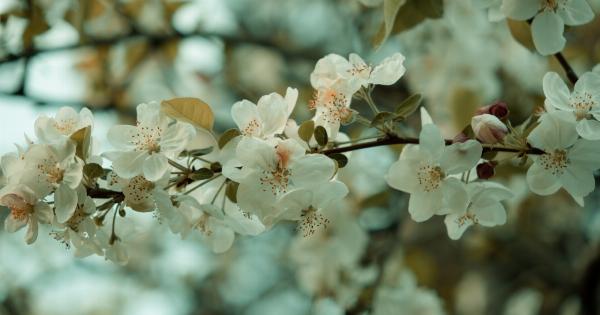Are you tired of dealing with unwanted blossoms in your garden? Don’t worry, we have got you covered. In this article, we will share expert strategies that will help you quickly remove blossoms from your garden.
Whether you want to remove them for aesthetic reasons or to prevent the spread of seeds, these tips will come in handy. Let’s dive right in!.
1. Manual Removal
One of the simplest and most effective ways to remove blossoms is through manual removal. This method is particularly useful for larger blossoms that are easy to spot. Simply grab the blossom at its base and gently twist it off.
Be careful not to damage the plant while doing so.
2. Pruning
Pruning is another effective strategy for removing blossoms. It involves cutting off the blossoms along with their stems using pruning shears. Pruning not only removes the blossoms but also promotes overall plant health by encouraging new growth.
Make sure to sterilize your pruning shears before and after each use to prevent the spread of diseases.
3. Mulching
Mulching is a preventive measure that can help reduce the number of blossoms in your garden. By applying a layer of mulch around your plants, you create a barrier that prevents the growth and spread of unwanted blossoms.
Organic mulches, such as wood chips or straw, work best for this purpose. Make sure to replenish the mulch regularly to maintain its effectiveness.
4. Herbicides
If manual removal and pruning aren’t enough to tackle the blossom problem, you can consider using herbicides. Herbicides are chemical substances specifically designed to kill unwanted plants, including blossoms.
However, it is crucial to read and follow the instructions provided by the manufacturer to ensure safe and effective use. Opt for selective herbicides that target specific types of blossoms to minimize damage to desirable plants.
5. Regular Weeding
Regular weeding is essential to keep your garden blossom-free. By removing weeds at an early stage, you prevent them from flowering and seeding. Weeding can be done manually by pulling out the weeds or using a garden hoe to cut them off at the soil level.
Be diligent in your weeding efforts to stay on top of the blossoms and prevent them from taking over your garden.
6. Proper Watering
Believe it or not, proper watering plays a crucial role in preventing the growth and spread of blossoms. Overwatering can promote the growth of weeds and undesirable plants, including blossoms.
Ensure that you water your plants only when necessary and at the base, rather than overhead. This helps in reducing the overall moisture level, making it less conducive for blossoms to thrive.
7. Shade Cloth
If you have specific areas in your garden that are prone to blossoms, consider using shade cloth.
Shade cloth not only helps in protecting plants from excessive sunlight but also inhibits the growth of unwanted blossoms by reducing the amount of light they receive. Install the shade cloth over the desired area and adjust its opacity based on your needs.
8. Controlling Fertilizer
Fertilizers are essential for promoting plant growth but can inadvertently encourage the growth of unwanted blossoms. High-nitrogen fertilizers, in particular, can stimulate the production of foliage rather than flowers.
Opt for low-nitrogen fertilizers or those specifically formulated to promote flower production. This will help channel the plant’s energy towards flowering rather than excessive foliage growth.
9. Use of Cover Crops
Consider planting cover crops as a natural way to suppress the growth of unwanted blossoms. Cover crops are fast-growing plants that are sown between the main crops to suppress weeds, including blossoms.
These crops take up space and use up resources, leaving little room for blossoms to grow. Research which cover crops are suitable for your region and the specific blossoms you are trying to control.
10. Regular Monitoring
Finally, the key to rapidly removing blossoms is regular monitoring of your garden. Regularly inspect your plants for any signs of blossoms and take immediate action to prevent their spread.
The earlier you identify and remove blossoms, the easier it will be to keep them under control.































